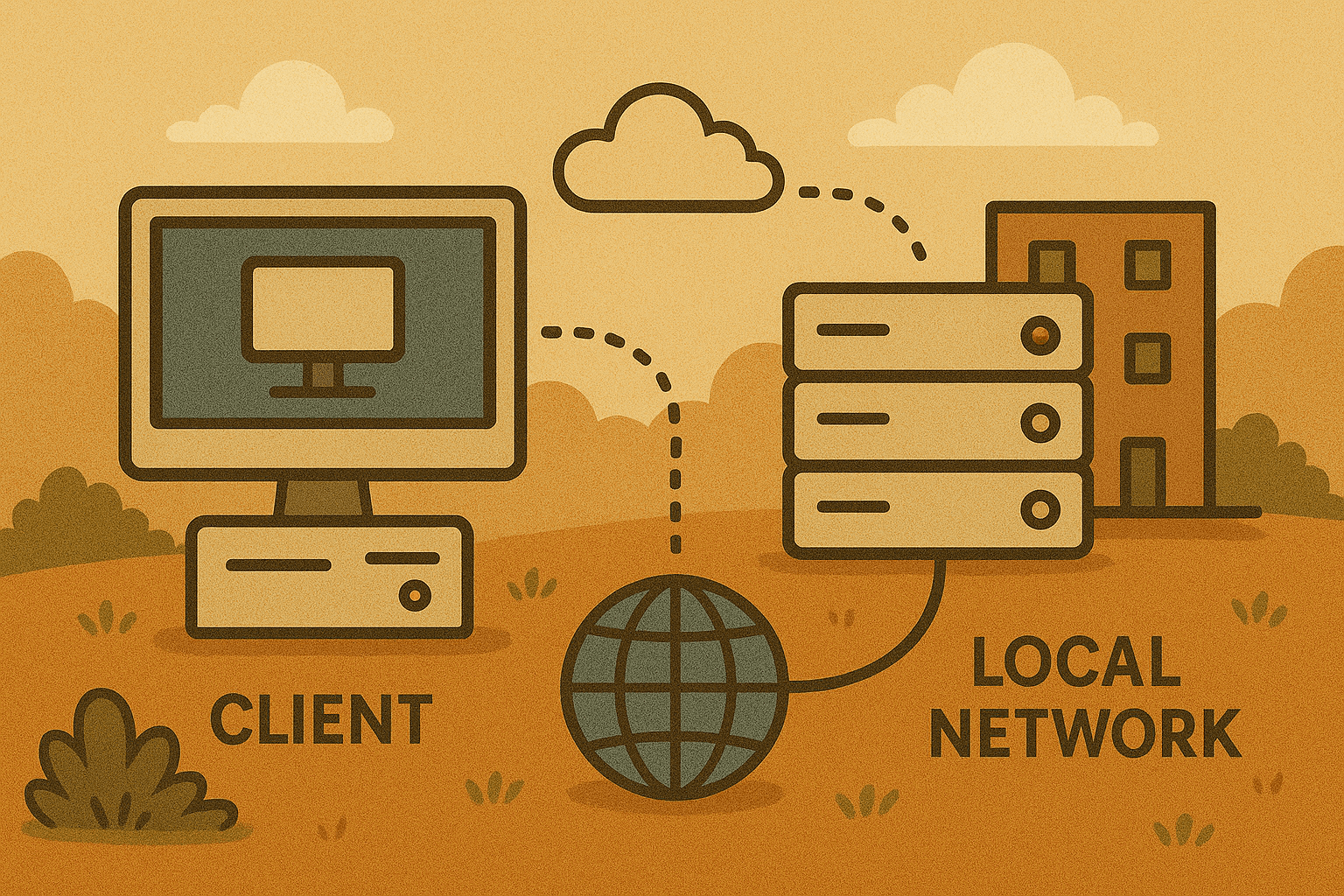
Web Development: How Client and Server Communicate on Local Network and the Internet
A clear beginner-friendly explanation of how web clients and servers talk to each other — from local development on localhost to full internet-scale communication.
dogunfx
When you open a website or test an app on your local computer, something magical happens behind the scenes — your client (browser or app) communicates with a server that sends data back to you.
Understanding this communication process is essential to becoming a skilled web developer.
In this post, we’ll explore how this client-server relationship works, both when you’re building locally (localhost) and when your app is live on the internet.
1. The Client and the Server
Before we dive into networking, let’s define the two main actors:
🖥️ Client
The client is usually the browser or application that requests data.
Examples:
- Chrome requesting
https://example.com - A React frontend making an API call to
https://api.example.com - Your terminal running
curl http://localhost:8000
💾 Server
The server is the program that listens for incoming requests and responds with data.
It could be:
- A Laravel, Node.js, or Django backend
- An API hosted on a remote server
- A local development server on your own computer
The client sends a request, and the server responds — this is the core of web communication.
2. The HTTP Request-Response Cycle
When you visit a website or make an API call, the communication follows a specific pattern called the HTTP request-response cycle.
Here’s what happens:
- The client sends a request to the server (e.g., “Give me the homepage”).
- The server processes the request.
- The server sends a response (e.g., HTML, JSON data, or an error message).
- The browser displays or uses that response.
Example:
GET /index.html HTTP/1.1
Host: example.com
And the server might respond:
HTTP/1.1 200 OK
Content-Type: text/html
<html>
<body>
<h1>Hello World!</h1>
</body>
</html>
This simple exchange powers every website and web app you use daily.
3. Communication on a Local Network (During Development)
When you’re building locally, both the client and server usually run on your computer.
Example setup:
- Backend (Node.js, Laravel, Django) →
localhost:8000 - Frontend (React, Vue, Next.js) →
localhost:3000
🔄 How Local Communication Works
- Your frontend app running on
localhost:3000makes a request tohttp://localhost:8000/api/users. - The backend running on port
8000receives the request and responds with JSON. - Both programs talk over the loopback network interface (
127.0.0.1).
Even though this is "local," it still uses network protocols (TCP/IP) like any internet connection — just without leaving your machine.
💡 Tip: When working locally, you might see “CORS errors.” This happens when browsers block requests between different ports or domains — a security feature that still applies locally.
4. Communication on the Internet
Once you deploy your app, communication happens over the internet, not just your own device.
🧭 Step-by-Step Overview
- DNS Lookup
- The browser converts a domain (like
example.com) into an IP address using DNS (Domain Name System). - Think of DNS as the internet’s phonebook.
- The browser converts a domain (like
- Establishing a Connection
- Your computer sends packets to that IP using TCP (Transmission Control Protocol).
- For secure websites, the connection is encrypted with HTTPS (TLS/SSL).
- Sending the Request
- Your browser sends an HTTP request (like
GET /home). - The server receives it, processes it (via PHP, Node.js, etc.), and generates a response.
- Your browser sends an HTTP request (like
- Receiving the Response
- The server sends HTML, JSON, or image data back to your browser.
- The browser renders or displays the response to the user.
🌍 Example Flow
Let’s say you visit:https://app.agopay.com/dashboard
Here’s what happens:
| Step | Action | Description |
|---|---|---|
| 1 | DNS Lookup | Browser finds IP address of app.agopay.com |
| 2 | Connection | TCP + TLS handshake establishes a secure connection |
| 3 | Request | Browser sends GET /dashboard |
| 4 | Server Response | Laravel or Node server returns the HTML for the dashboard |
| 5 | Rendering | Browser displays the final dashboard page |
5. Common Communication Protocols
| Protocol | Description | Example Usage |
|---|---|---|
| HTTP/HTTPS | The foundation of web communication | Browsers, APIs |
| TCP/IP | Ensures reliable packet delivery | All web communication |
| WebSocket | Enables real-time, two-way communication | Chats, live dashboards |
| FTP/SFTP | File transfer between client and server | File hosting, deployments |
| DNS | Resolves domain names to IP addresses | example.com → 192.0.2.1 |
6. Visualizing It All
Here’s a simple breakdown of the journey your request takes:
You (Client) ───► DNS ───► Server IP ───► HTTP Request ───► Server Processes ───► HTTP Response ───► Browser Displays
When working locally, it’s more like this:
Browser (localhost:3000) ───► Local Backend (localhost:8000) ───► Response
Same concept — just happens within your own computer.
7. Conclusion
Understanding how clients and servers communicate is the backbone of web development.
Whether you’re testing locally on localhost or serving millions of users globally, the same fundamental process applies: requests and responses traveling over the network.
By mastering how this works, you’ll gain a deeper appreciation for tools like APIs, DNS, and network protocols that make the web possible.
📘 Learn More: